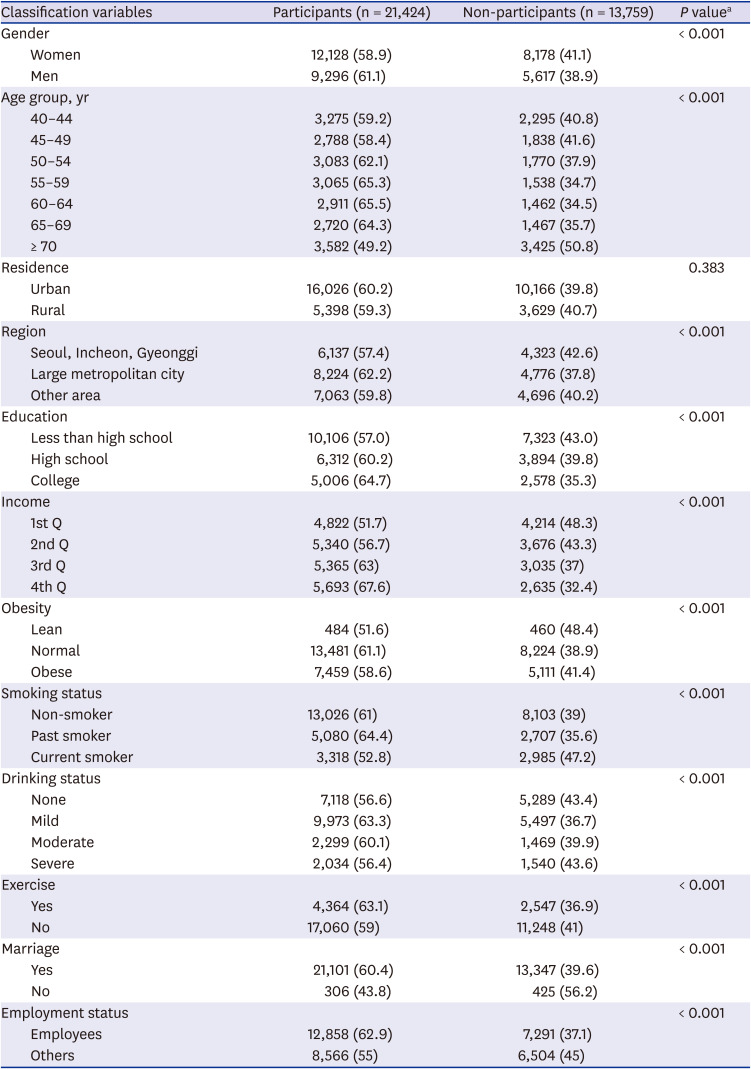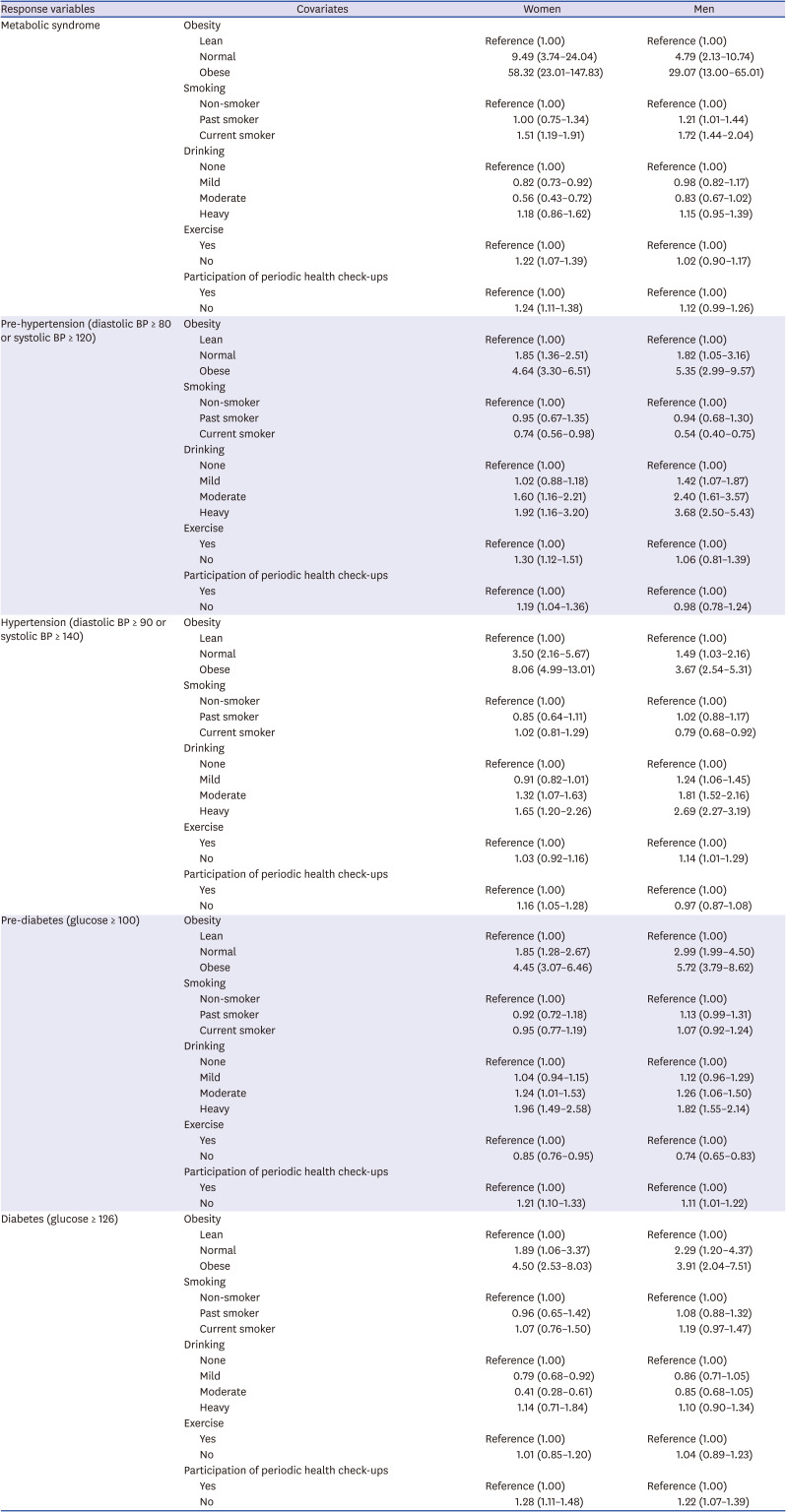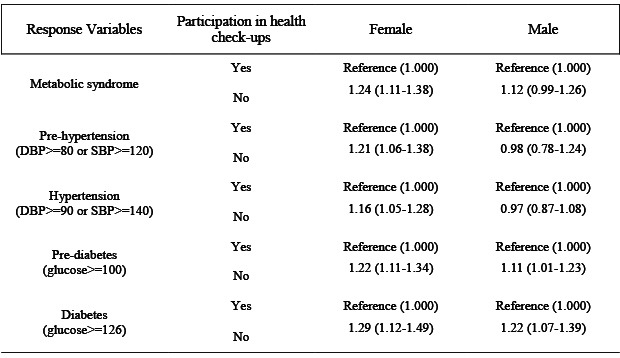1. Riley L, Guthold R, Cowan M, Savin S, Bhatti L, Armstrong T, et al. The World Health Organization STEPwise approach to noncommunicable disease risk-factor surveillance: methods, challenges, and opportunities. Am J Public Health. 2016; 106(1):74–78. PMID:
26696288.

2. National Health Insurance Service. National Health Screening Statistics. Wonju, Korea: Health Insurance Review & Assessment Service;2019.
3. Lee WC, Lee SY. National Health Screening Program of Korea. J Korean Med Assoc. 2010; 53(5):363–370.

4. Hozawa A, Kuriyama S, Watanabe I, Kakizaki M, Ohmori-Matsuda K, Sone T, et al. Participation in health check-ups and mortality using propensity score matched cohort analyses. Prev Med. 2010; 51(5):397–402. PMID:
20828583.

5. Kang E, Kim D. Health examination for smokers and its policy implications. Health Welf Policy Forum. 2007; 131:84–96.
6. Rakowski W, Clark MA, Ehrich B. Smoking and cancer screening for women ages 42-75: associations in the 1990-1994 National Health Interview Surveys. Prev Med. 1999; 29(6 Pt 1):487–495. PMID:
10600429.

7. Cho BL, Lee CM. Current situation of national health screening systems in Korea. J Korean Med Assoc. 2011; 54(7):666–669.

8. Yeo JY, Jeong HS. Determinants of health screening and its effects on health behaviors. Health Policy Manag. 2012; 22(1):49–64.

9. McGrail MR. Spatial accessibility of primary health care utilising the two step floating catchment area method: an assessment of recent improvements. Int J Health Geogr. 2012; 11(1):50. PMID:
23153335.

10. Miwa M, Kawaguchi H, Arima H, Kawahara K. The effect of the development of an emergency transfer system on the travel time to tertiary care centres in Japan. Int J Health Geogr. 2006; 5(1):25. PMID:
16749943.
11. Lian M, Struthers J, Schootman M. Comparing GIS-based measures in access to mammography and their validity in predicting neighborhood risk of late-stage breast cancer. PLoS One. 2012; 7(8):e43000. PMID:
22952626.

12. Fujita M, Sato Y, Nagashima K, Takahashi S, Hata A. Impact of geographic accessibility on utilization of the annual health check-ups by income level in Japan: a multilevel analysis. PLoS One. 2017; 12(5):e0177091. PMID:
28486522.

13. Ahn J, Kim NS, Lee BK, Park J, Kim Y. Non-standard workers have poorer physical and mental health than standard workers. J Occup Environ Med. 2019; 61(10):e413–21. PMID:
31348413.

14. Ahn J, Kim NS, Lee BK, Park J, Kim Y. Association of blood pressure with blood lead and cadmium levels in Korean adolescents: analysis of data from the 2010-2016 Korean National Health and Nutrition Examination Survey. J Korean Med Sci. 2018; 33(44):e278. PMID:
30369859.

15. Lee BK, Kim Y. Association of blood cadmium level with metabolic syndrome after adjustment for confounding by serum ferritin and other factors: 2008-2012 Korean National Health and Nutrition Examination Survey. Biol Trace Elem Res. 2016; 171(1):6–16. PMID:
26343361.

16. Fujita M, Sato Y, Nagashima K, Takahashi S, Hata A. Income related inequality of health care access in Japan: a retrospective cohort study. PLoS One. 2016; 11(3):e0151690. PMID:
26978270.

17. Dooley D, Catalano R, Wilson G. Depression and unemployment: panel findings from the Epidemiologic Catchment Area study. Am J Community Psychol. 1994; 22(6):745–765. PMID:
7639201.

18. Han SH, Jo EH, Son JA, So ES. Factors association national health screening program participation according to sex in Korean: using the fifth Korea national health and nutrition examination survey (KNHANES VI, 2013). Korean J Health Educ Promot. 2016; 33(3):37–48.
19. Khan MM, Goto R, Sonoda T, Sakauchi F, Washio M, Kobayashi K, et al. Impact of health education and screening over all-cause mortality in Japan: evidence from a cohort study during 1984-2002. Prev Med. 2004; 38(6):786–792. PMID:
15193899.

20. Ikeda A, Iso H, Toyoshima H, Fujino Y, Mizoue T, Yoshimura T, et al. The relationships between interest for and participation in health screening and risk of mortality: the Japan Collaborative Cohort Study. Prev Med. 2005; 41(3-4):767–771. PMID:
16137755.

21. Lee KH. Conceptual model for women's health. J Nurs Acad Soc. 1997; 27(4):933–942.

22. Yoon S, Jun DB, Park S. The effect of general health checks on healthcare utilization: accounting for self‐selection bias. J R Stat Soc Ser A Stat Soc. 2020; 183(1):3–36.

23. Bender AM, Jørgensen T, Pisinger C. Is self-selection the main driver of positive interpretations of general health checks? The Inter99 randomized trial. Prev Med. 2015; 81:42–48. PMID:
26190370.

24. Jee YJ, Kim YJ. The difference of health behavior between screening and non screening group by health examinations services. Asia Pac J Multimed Serv Converg Art Hum Sociol. 2017; 7(6):503–510.








 PDF
PDF Citation
Citation Print
Print




 XML Download
XML Download